Git Local Environment Setup With Commands
Git Local Environment Setup (Windows)
Read Time: 20 mins
In this article, we will cover how to set up a local environment in order to use Git on your own Windows PC. Let's go through the steps and get you set up!
What You Need:
- Your own PC with Windows installed
- Basic knowledge to operate Command Prompt
- Text Editor (ie. Atom) (If you don't have Atom installed on your PC, please view the How to Make a Website with HTML and CSS article)
- To have completed the Progate Git Study I and Command-Line Study I
Note: This article is for Windows users. Please read this article if you are using a Mac.
1. Installing Git
Firstly, let's install Git from Git for Windows.
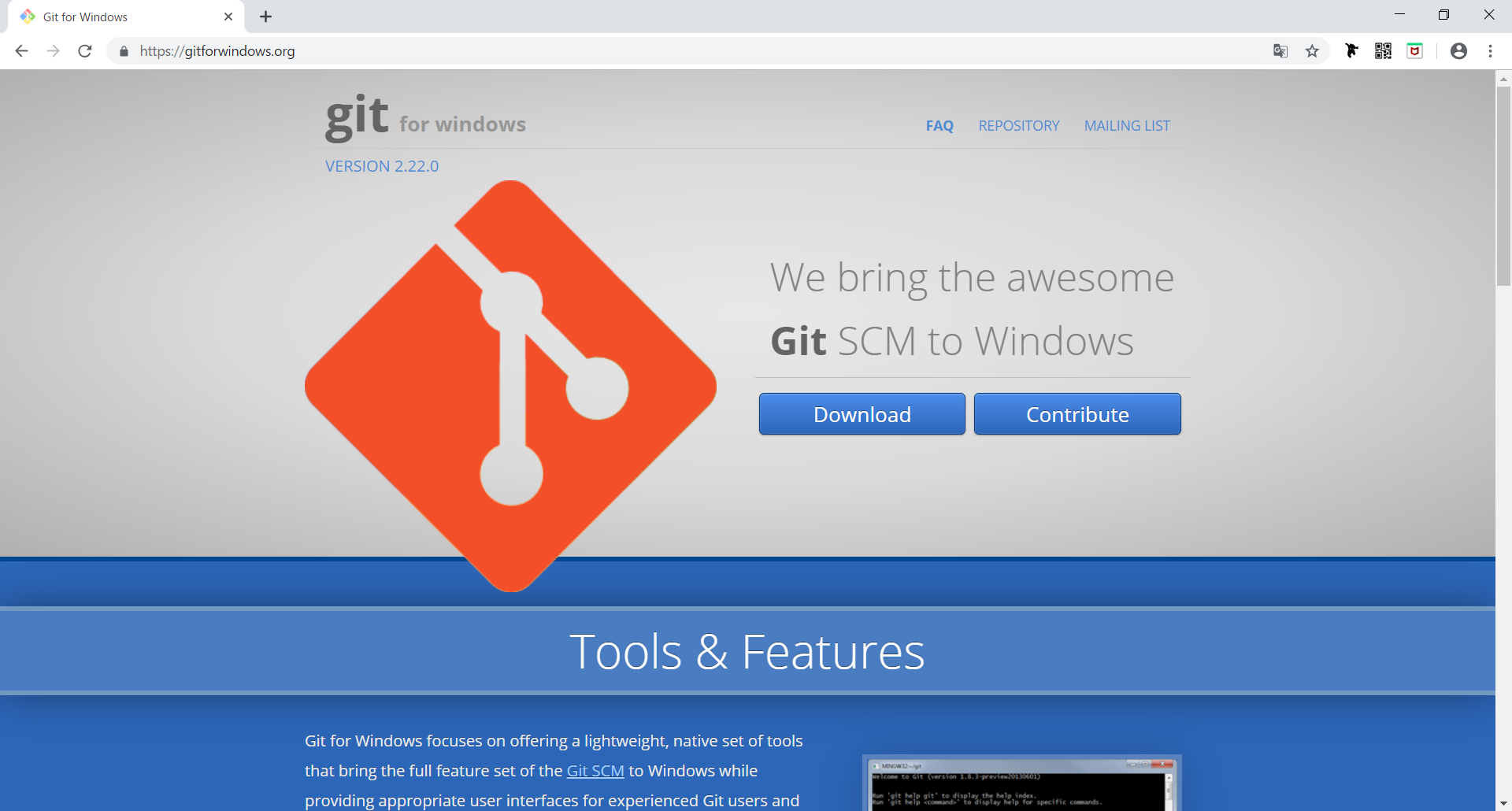 Git for Windows
Git for WindowsAfter the download is complete, open the file and an installation screen will pop up. Let's follow the prompts and complete the installation.
Step 1. Once you agree to the terms and conditions, click "Next"
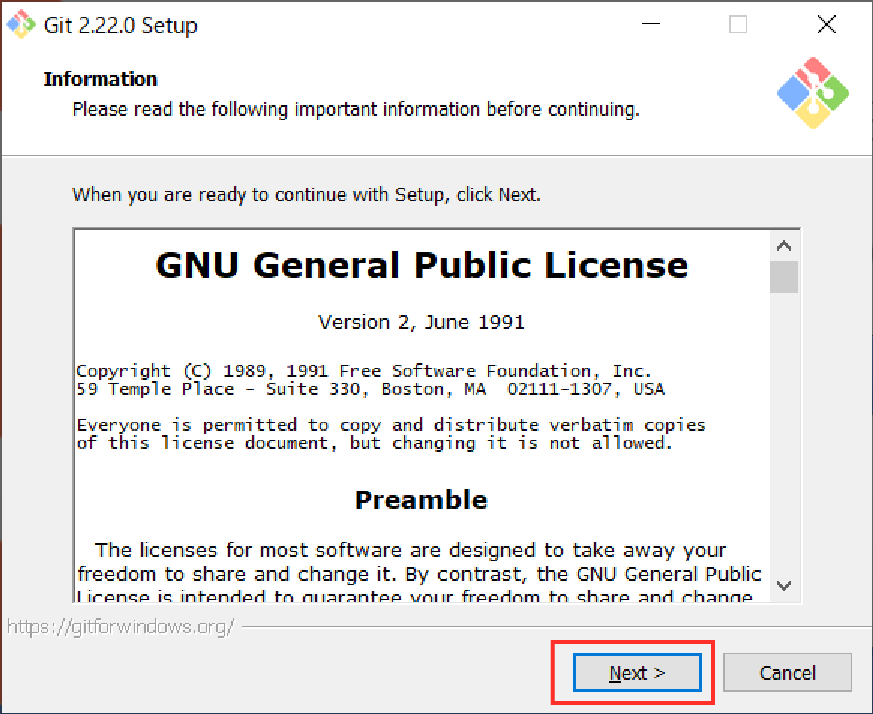 Click "Next"
Click "Next"Step 2. Click "Next"
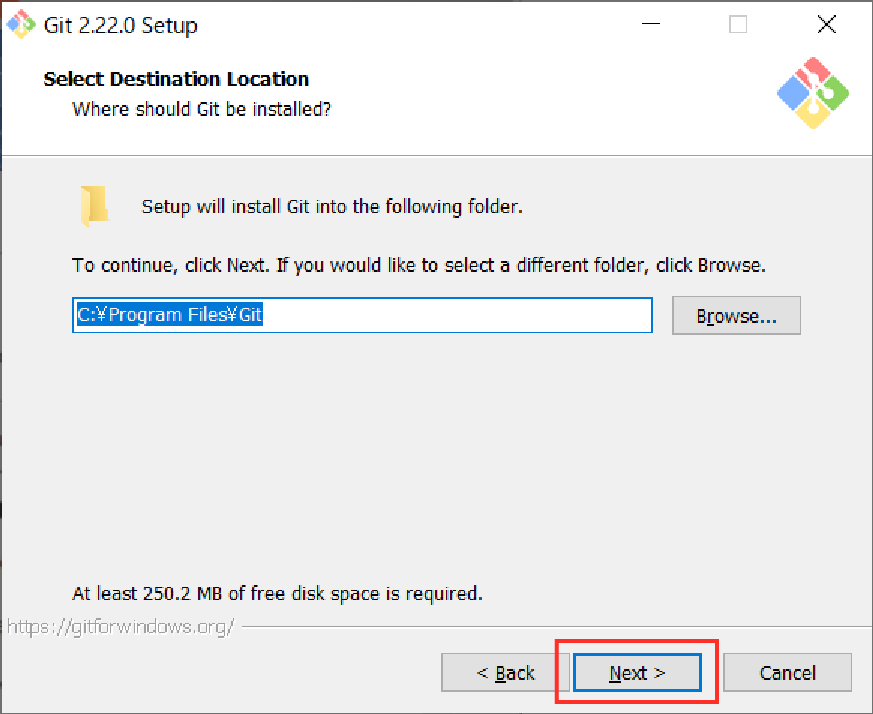 Click "Next"
Click "Next"Step 3. Click "Next"
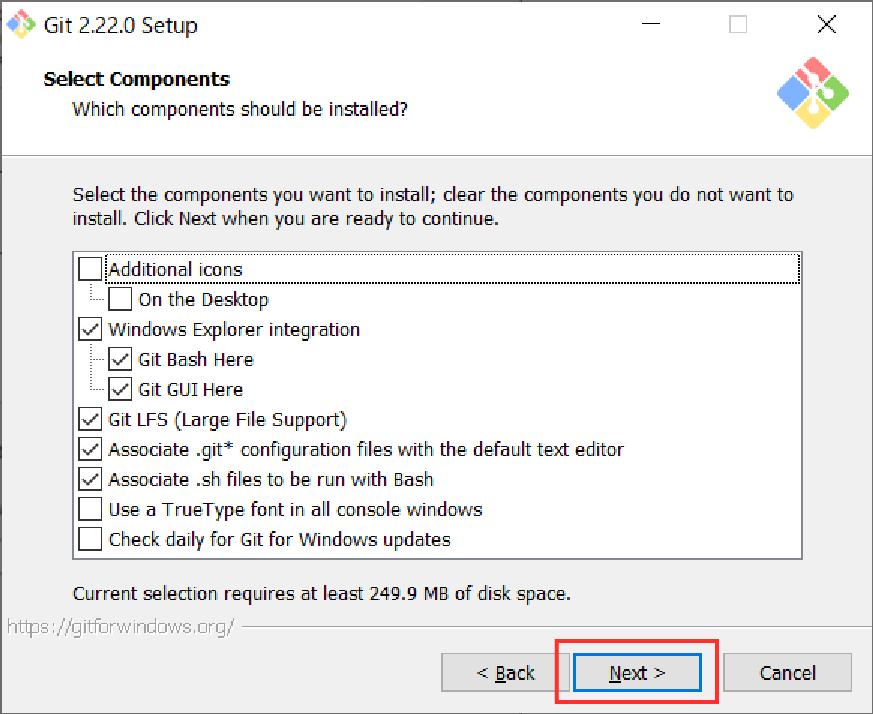 Click "Next"
Click "Next"Step 4. Click "Next"
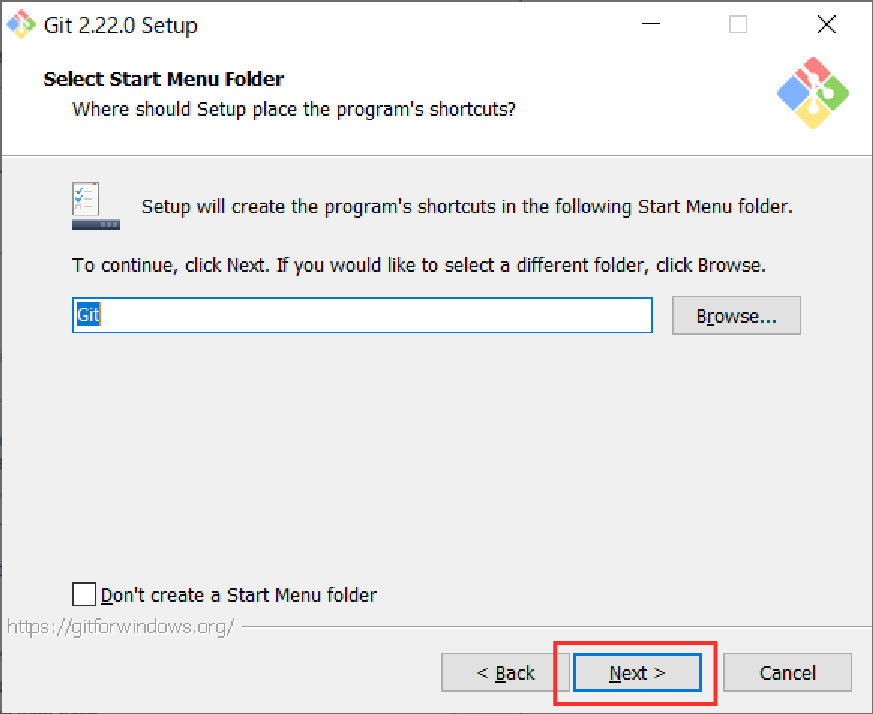 Click "Next"
Click "Next"Step 5. We must select the editor. Choose the editor that you will use and click "Next"
(The example below is for Atom)
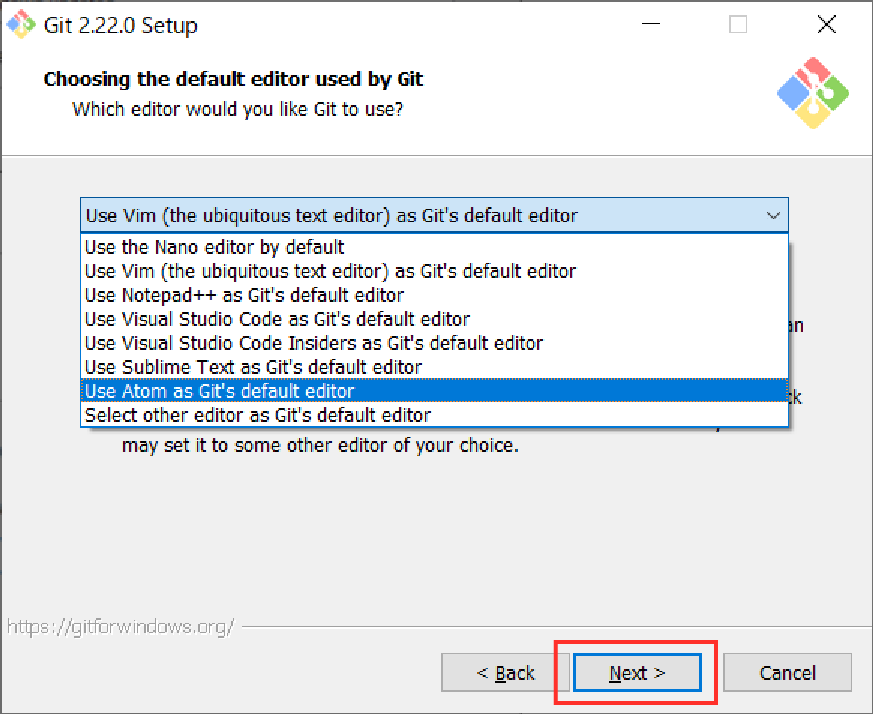 Select the editor and click "Next"
Select the editor and click "Next"Step 6. Check "Use Git from Git Bash only" and click "Next"
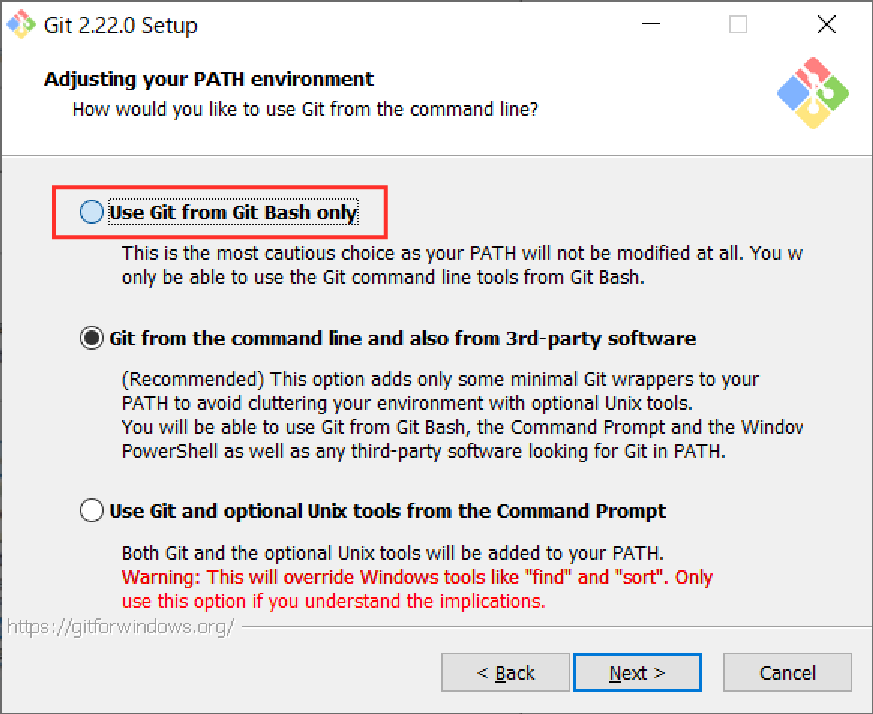
Step 7. Check "Use the OpenSSL Library" and click "Next"
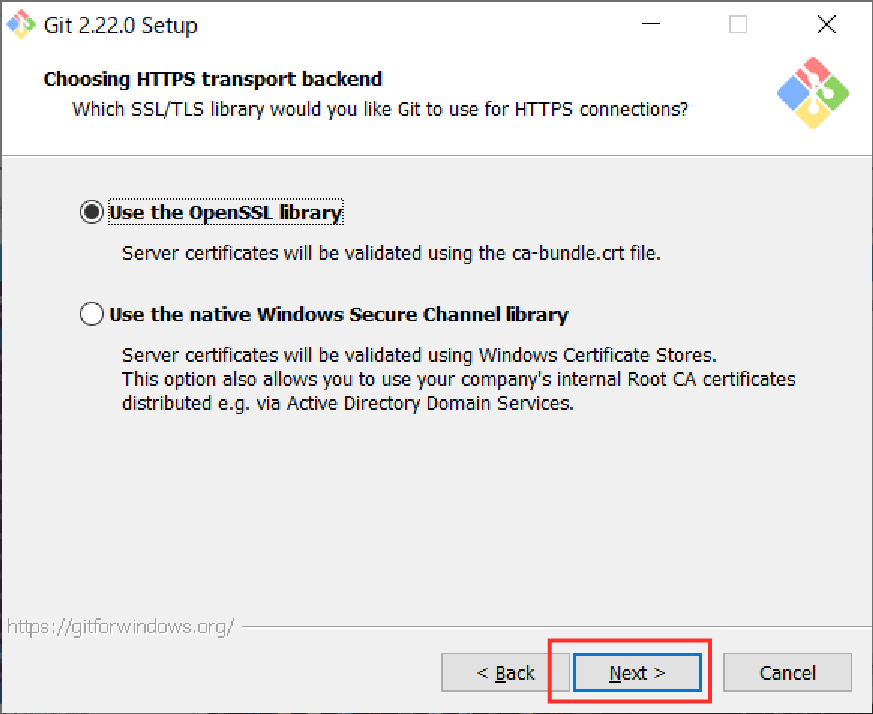
Step 8. Check "Checkout Windows-style, commit Unix-style line endings" and click "Next"
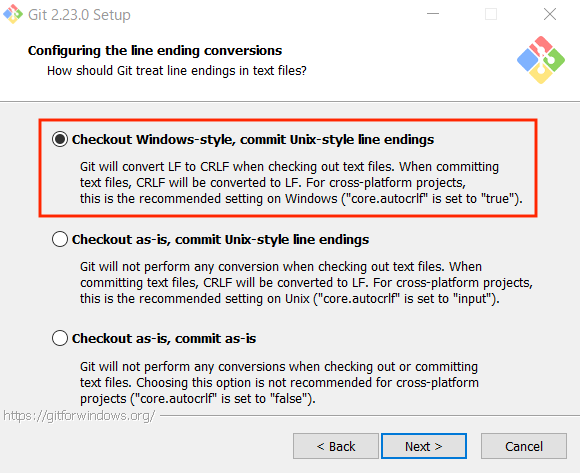
Step 9. Check "Use MinTTY (the default terminal of MSYS2)" and click "Next"
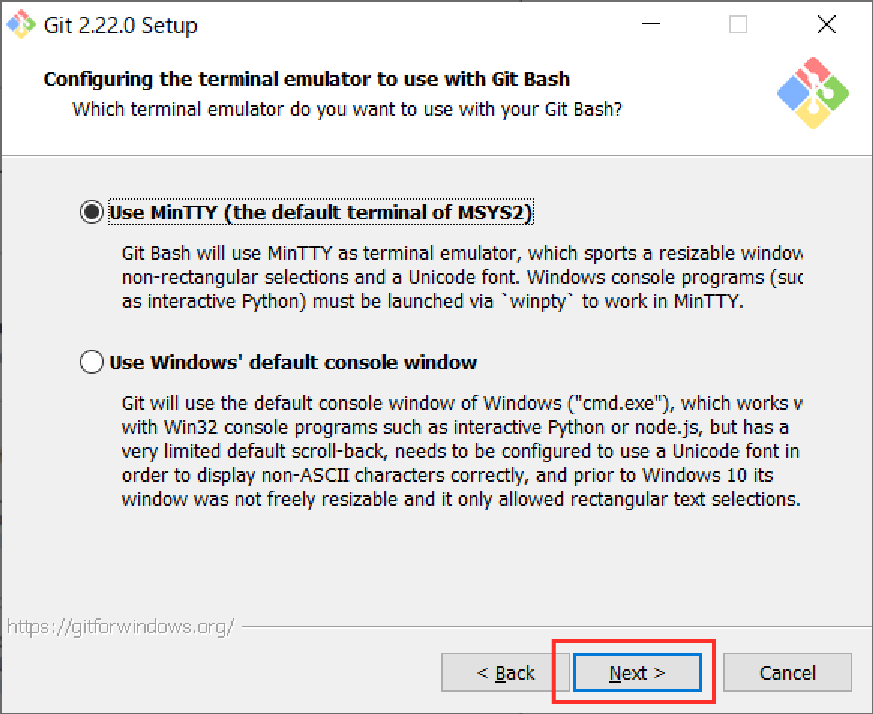
Step 10. Check all of the options and click "Next"
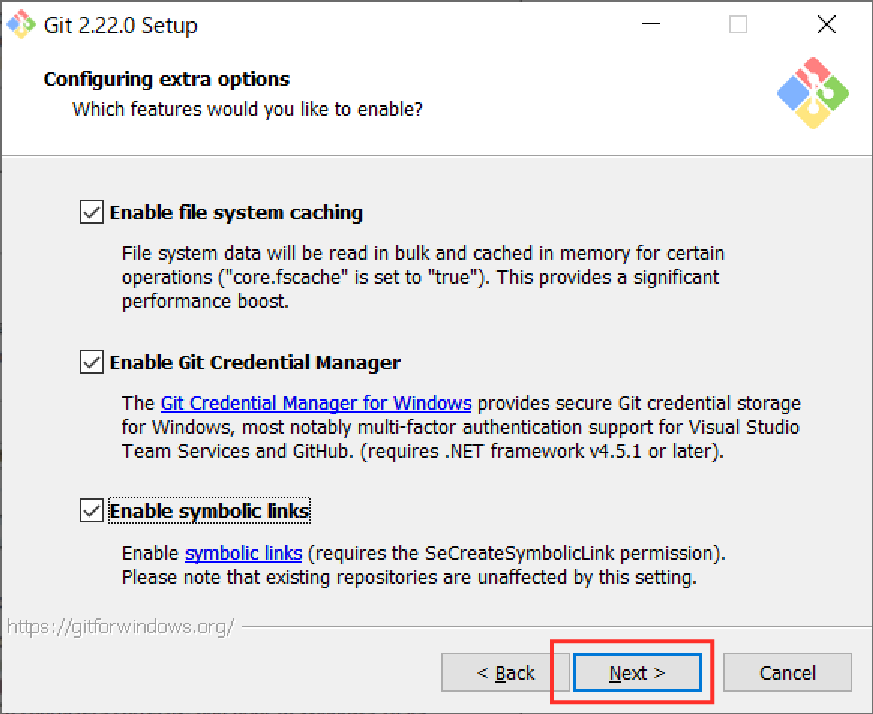
Step 11. Click "Install"
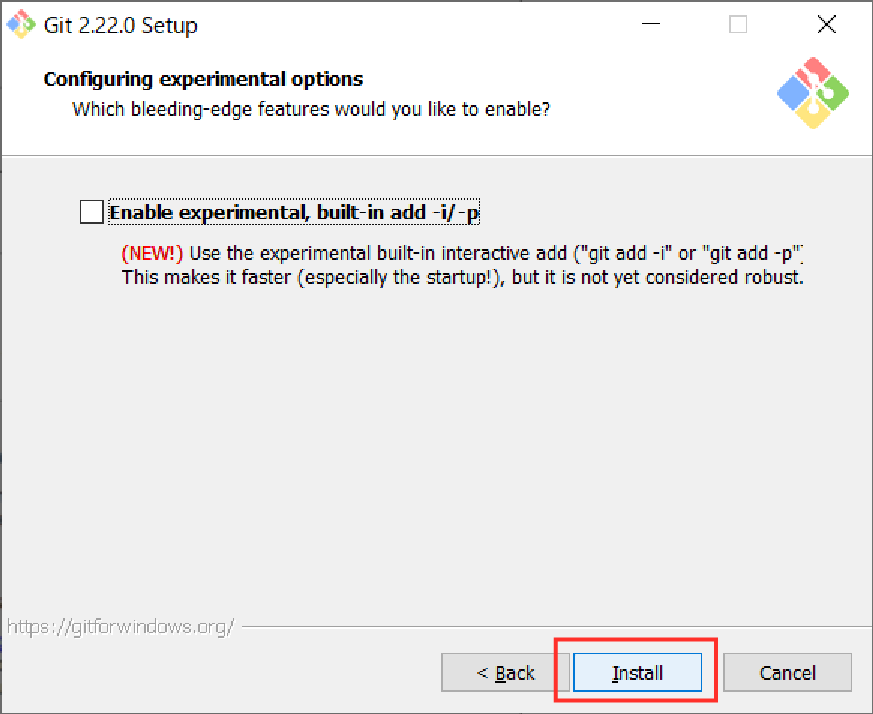
Now the installation will complete.
Step 12. Click "Finish" and you will be able to start using Git!
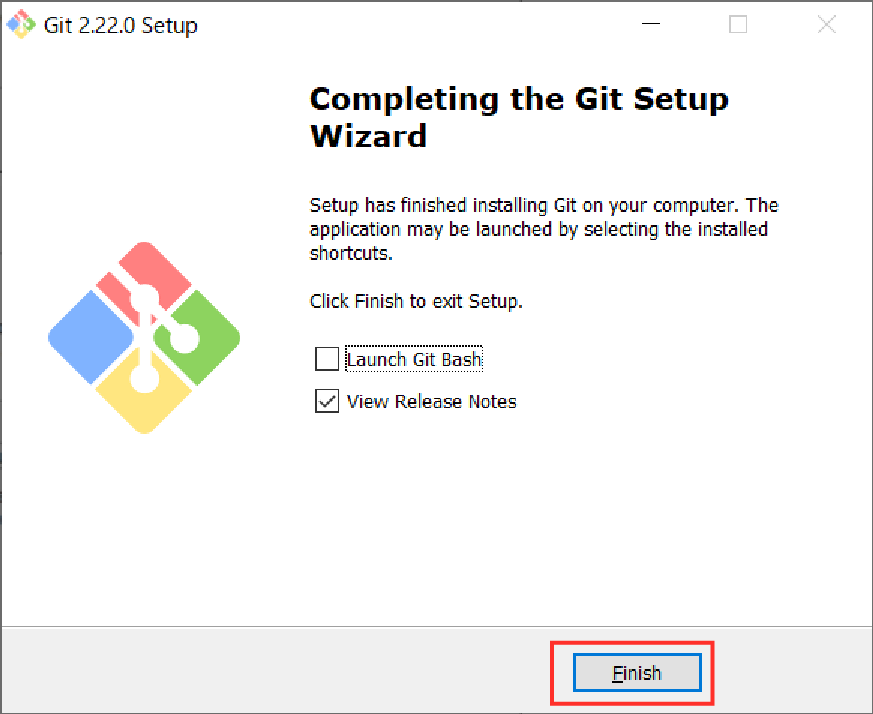
Now on your PC, there should be an application called Git Bash installed. This is a great tool to use for all your future development!
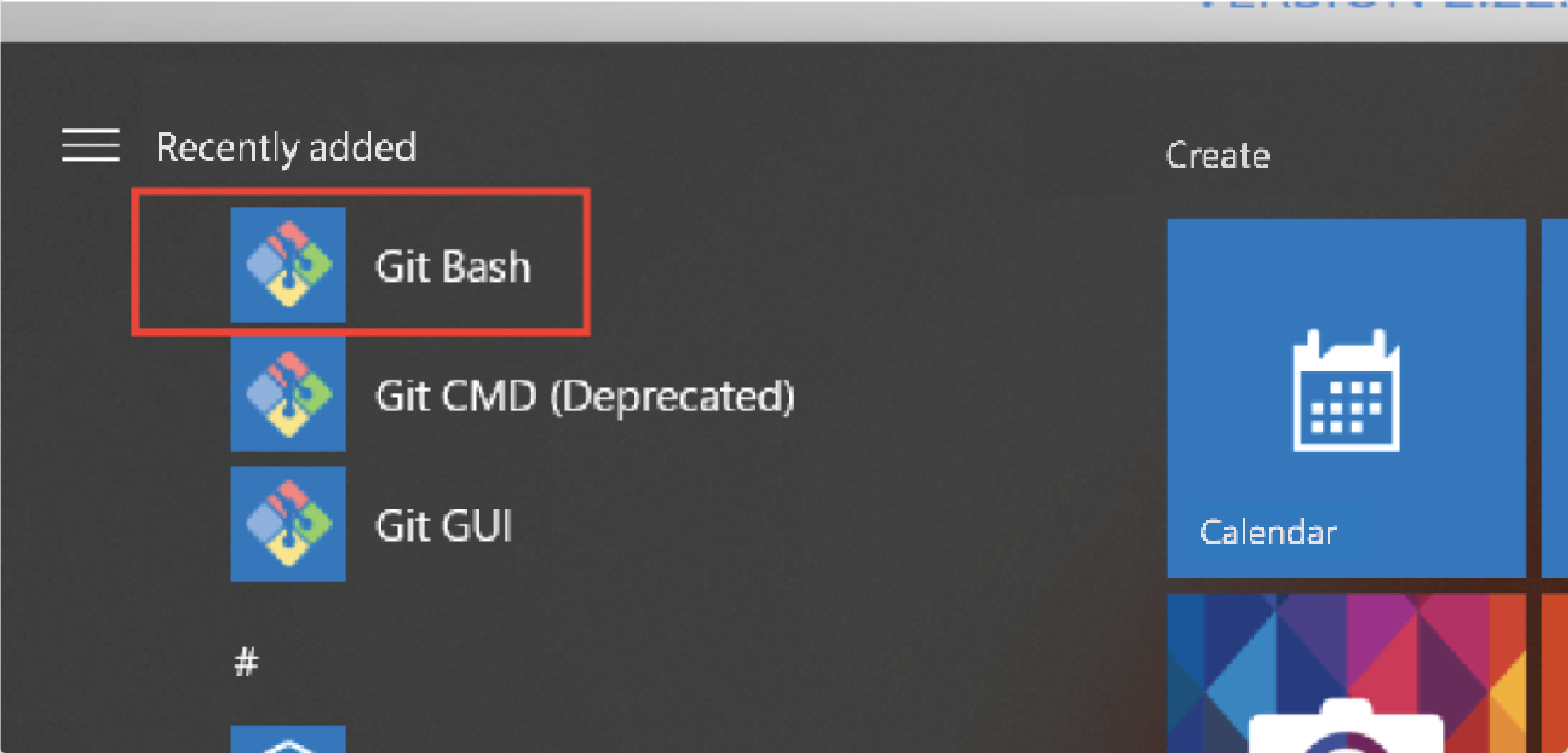 Git Bash has been installed
Git Bash has been installedCheck
Is Git installed on your PC?
Done?
2. Initial Git Setup
First, let's open up Git Bash
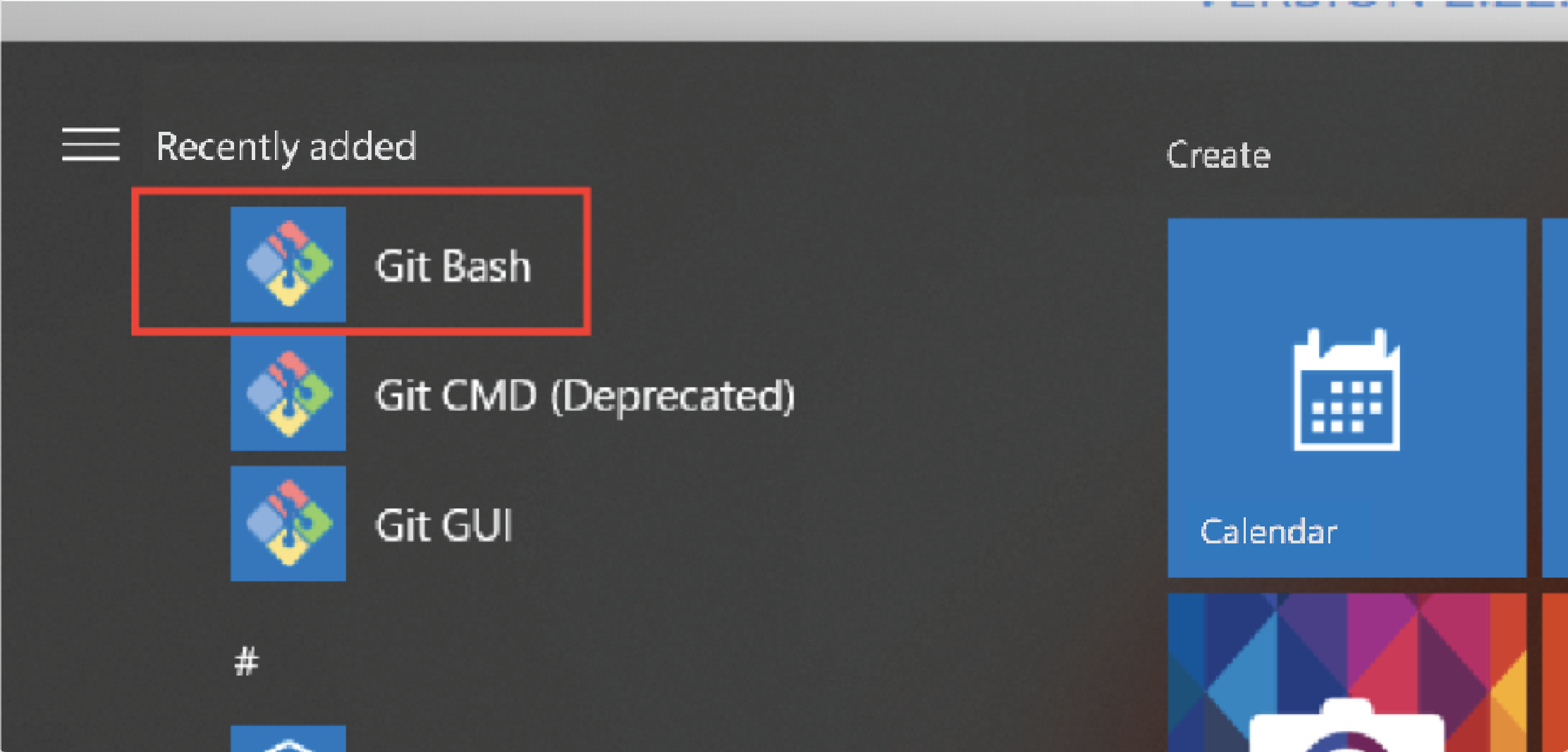 Open up Git Bash
Open up Git BashAfter it opens, your screen should look like the one below.
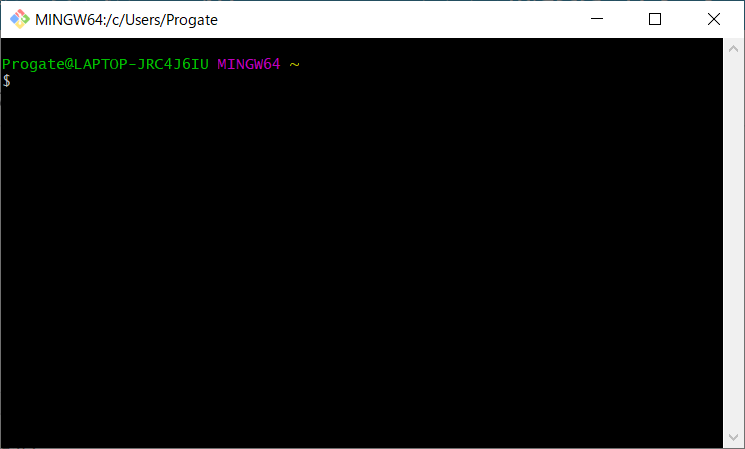 Git Bash startup screen
Git Bash startup screenSet up a username and email address
By setting up a username and email address in Git, any commits made will be recorded and you will be able to identify who the commits were created by.
Run the commands below to set up your details:
git config --global user.name "username"git config --global user.email "email address"(You can choose your own username and email address)
Below is just an example.
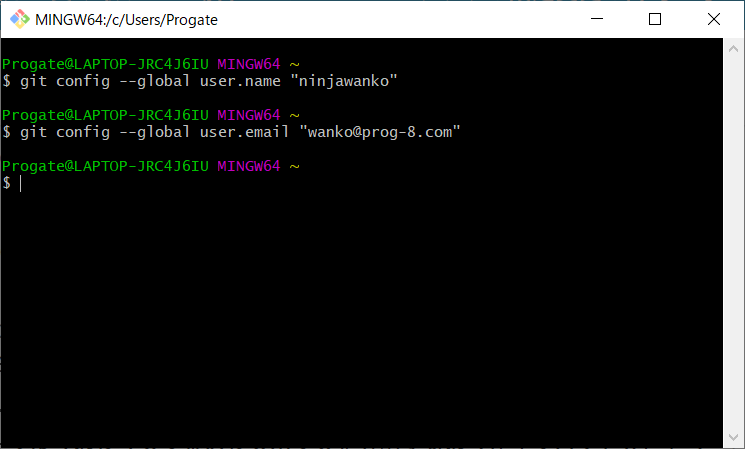 Setting up the user details
Setting up the user detailsNow the initial setup is complete!
3. Setting Up GitHub
From here, we will be looking at how to add a new remote repository by utilizing a service called Github.
You will create a remote repository like the one Master White prepared for you in Git Study I.
Setting up a Github account
In order to utilize Github, let's make an account.
To create an account, visit the Github Official Page
 Screen when you access the page
Screen when you access the pageOnce you have signed up and followed the prompts, you will be taken to a subscription selection page.
To use Github for free, click the "Free" option and then the "Continue" button at the bottom left.
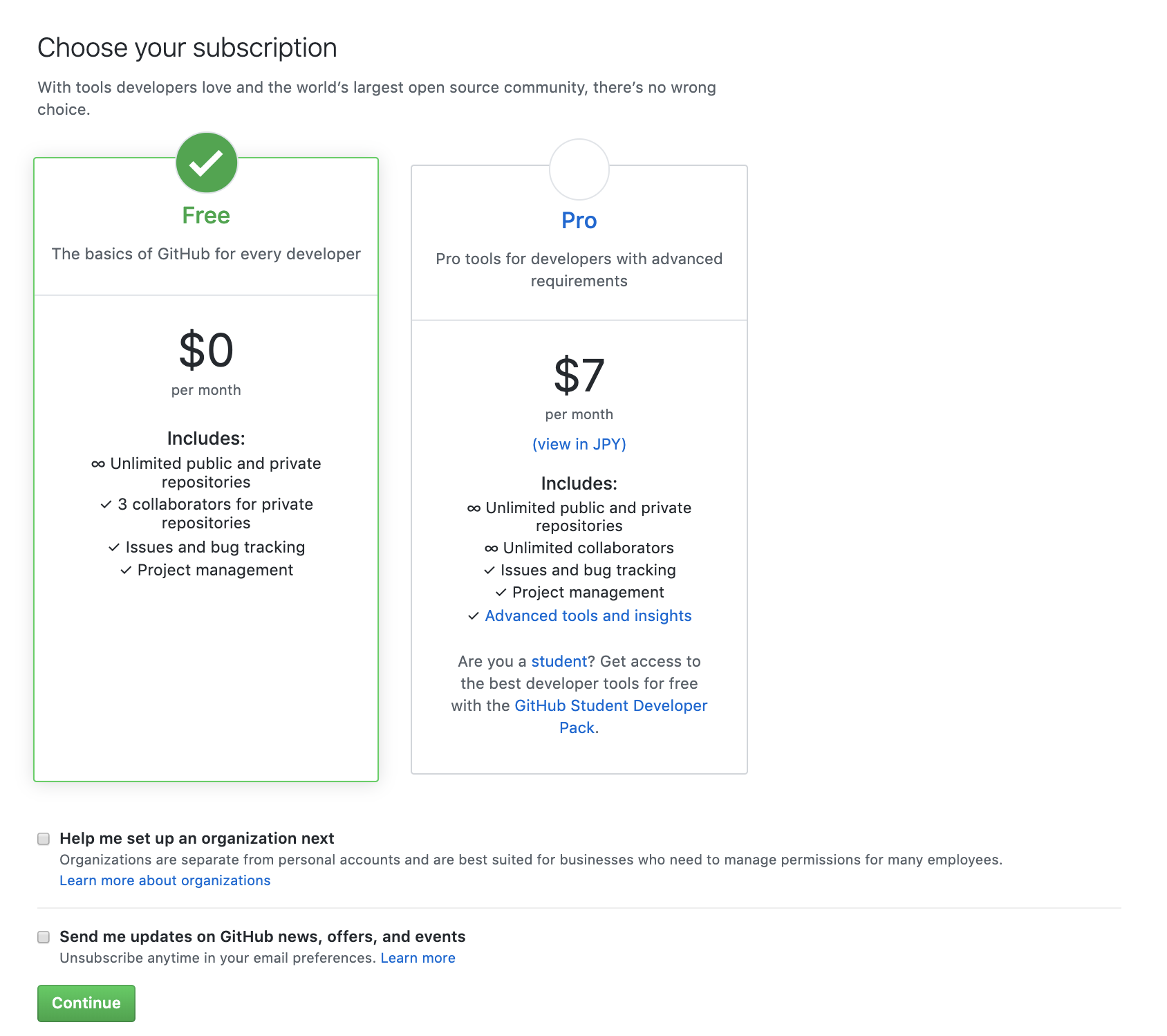 Subscription option page
Subscription option pageAfter selecting the subscription you will be asked multiple questions, but you do not need to answer them.
Lastly, click the "Submit" button and your account setup will be complete!
Once you have set up your account, you will receive a verification email. Click on the link attached in the email, and now you will be able to start using your Github account.
Creating a new remote repository
To create a new remote repository, click on the "+" button in the header on the top right.
 Creating a new remote repository
Creating a new remote repositoryAfter clicking the "+" button, click on "New repository."
By clicking "New repository", you will be navigated to the page below.
Type in a project name where it says "Repository name" and click "Create repository" to create a new remote repository.
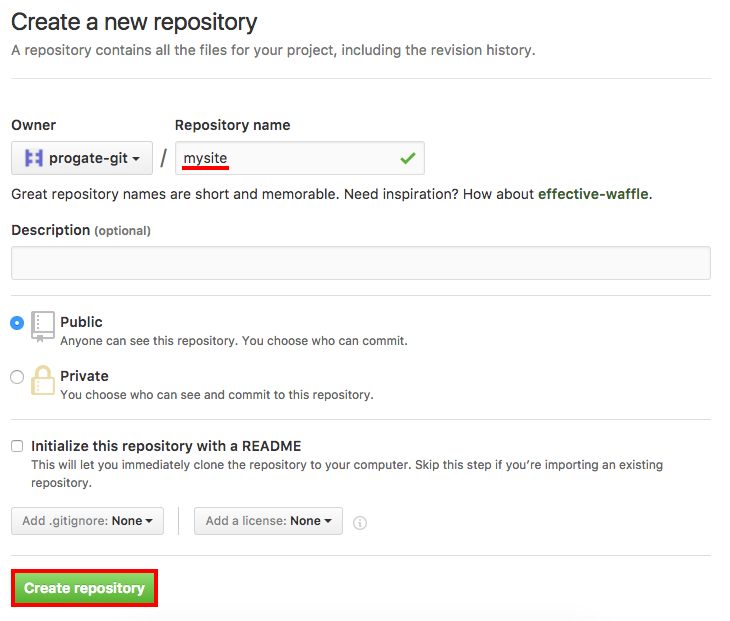 New repository details
New repository detailsOnce the remote repository is created, you will be directed to the page below.
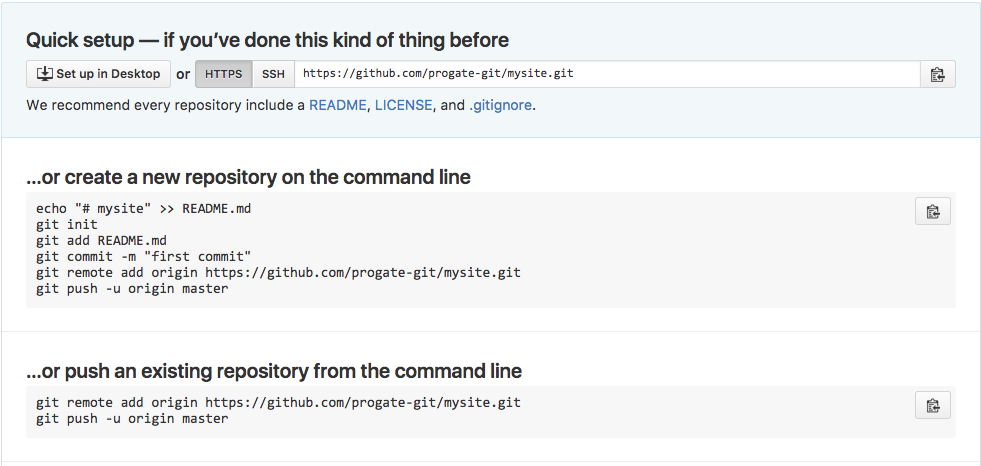 The remote repository has been created
The remote repository has been created4. Pushing to GitHub
Let's try pushing local repository content to the remote repository we created on GitHub.
Preparing to use Git
Using Git, you must first create a directory and move to that directory by running the following commands:
mkdir mysitecd mysite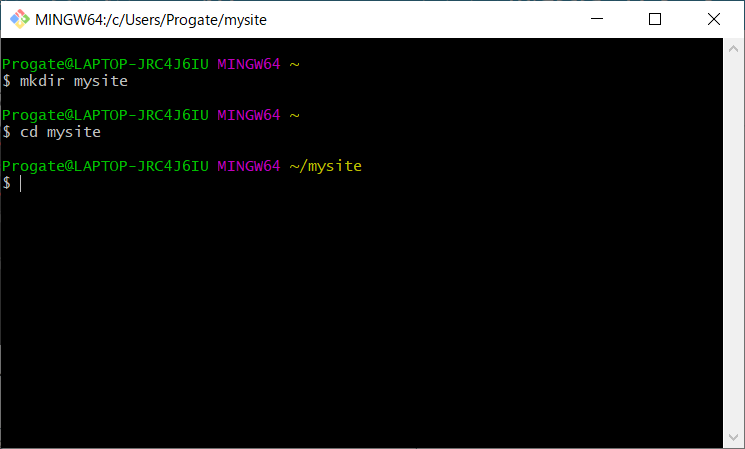 After running the commands
After running the commandsTo be able to manage that file in Git, you must run the following command:
git initAfter you have run the
git init command, please copy the line starting with "https" as shown below. Copy the URL
Copy the URLOnce you have copied the line, replace the <URL> and run the following command:
git remote add origin <URL>This command specifies the remote repository you want to transfer your local repository content from.
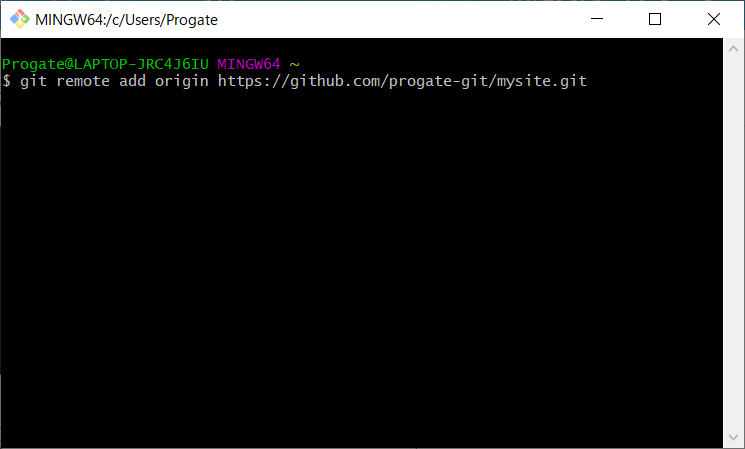 Specify the remote repository
Specify the remote repositoryPush
Next, in order to push, you must create a file and commit it.
touch index.htmlgit add index.htmlgit commit -m "Create index.html"Now you will use the "git push" command:
git push origin masterLet's check if the commit was pushed successfully on GitHub.
You should see an "index.html" file on GitHub if you have done everything correctly.
 Check that the commit was pushed
Check that the commit was pushed
Comments
Post a Comment